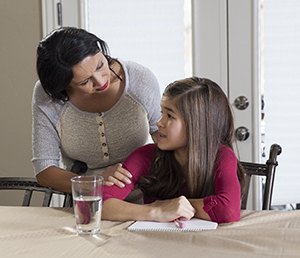Type 1 Diabetes and Your Child: High Blood Sugar
Type 1 Diabetes and Your Child: High Blood Sugar

Using too little insulin
Using insulin that’s not stored properly or that’s past the expiration date
Eating too much food
Being sick (for example, have a cold or the flu or vomiting or diarrhea)
Being less active than usual
Being under extra stress
Body's response to low blood glucose
Hormonal changes during puberty
How to recognize high blood glucose
Your child may be thirsty and need to urinate often. Very high blood glucose may cause nausea, blurry vision, weakness, or dizziness. Help your child learn to recognize his or her symptoms of high blood glucose. Make sure your child knows to tell you about them right away. But keep in mind that sometimes there are no symptoms.
How to treat high blood glucose
Recommendations include the following:
Check your child’s blood glucose.
If blood glucose is over your child’s target range, give him or her water or sugar-free and caffeine-free drinks.
If blood glucose is over 250 mg/dL, check your child’s blood or urine for ketones. Ketones are the waste when the body burns fat instead of glucose for energy. The condition is called ketosis.
If your child’s blood glucose stays over 250mg/dL or your child has ketones, call your child's healthcare provider.
Follow the plan given to you by your child’s healthcare providers. This may include giving extra insulin.
If your child has ketones
A moderate to high level of ketones in your child’s blood or urine is a warning sign of diabetic ketoacidosis (DKA). DKA is a medical emergency. To try to prevent DKA, you should:
Watch your child for symptoms of DKA. The symptoms include;
Nausea and vomiting
Stomach cramps
Fast breathing
Fruity-smelling breath
Blurred vision
Hard time paying attention or confusion
Follow your child's healthcare provider's instructions for giving your child insulin.
Call your child's healthcare provider if your child has a high ketone level.
Check your child's blood glucose every few hours or more often if instructed to do so.
Don’t let your child exercise until ketones are back to normal.
If your child has ketones and symptoms of ketoacidosis, call 911 or take your child to the hospital emergency department.
Sick days
When your child is ill, his or her blood glucose may be higher than usual. This may be true even if he or she is not eating as much as usual. To handle this, you will develop a sick-day plan with your child’s healthcare provider. Sick day plans often include more frequent blood glucose checks, urine or blood ketone checks, and increased insulin. On sick days, keep in close contact with your child’s healthcare providers.
How to prevent high blood glucose
Make sure that:
Your child has the right amount of insulin and that he or she uses it on time.
Your child’s meals and snacks, exercise, and insulin are balanced throughout the day.
You follow your child's sick-day plan during an illness.
Insulin is stored properly and has not expired.
Updated:
October 29, 2017
Sources:
Special situations in children and adolescents with type 1 diabetes mellitus. Up to Date
Reviewed By:
Adler, Liora C., MD,Sather, Rita, RN